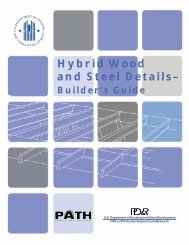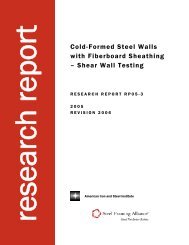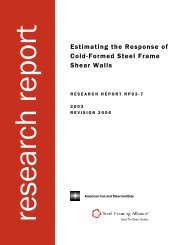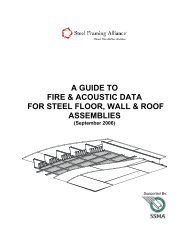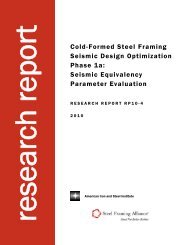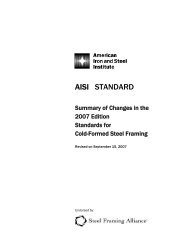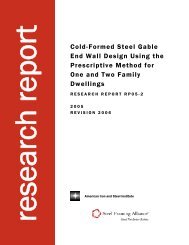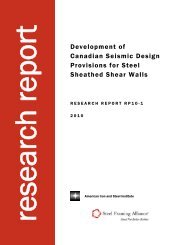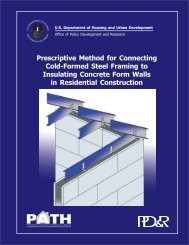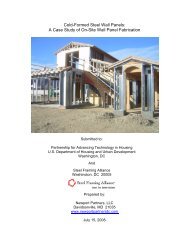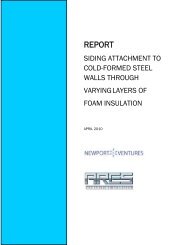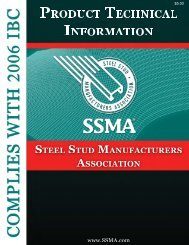SPECIFICATION FOR THE DESIGN OF - Transcon Steel
SPECIFICATION FOR THE DESIGN OF - Transcon Steel
SPECIFICATION FOR THE DESIGN OF - Transcon Steel
Create successful ePaper yourself
Turn your PDF publications into a flip-book with our unique Google optimized e-Paper software.
62 Commentary on the Prescriptive Method for One and Two Family Dwellings - 2004<br />
In seismic design, tributary areas are associated with uniform area weights (i.e., dead loads)<br />
assigned to the building systems (i.e., roof, walls, and floors) that generate the inertial seismic<br />
load when the building is subject to lateral ground motion. In wind design, the tributary areas<br />
are associated with the lateral component of the wind load acting on the exterior surfaces of the<br />
building (refer to Section C for wind loads).<br />
Figure E8.1 - Lateral Load Distribution by a Flexible Diaphragm<br />
The flexibility of a diaphragm depends on its construction as well as on its aspect ratio<br />
(length÷width). Long, narrow diaphragms, for example, are more flexible in bending along<br />
their long dimension than short, wide diaphragms. In other words, rectangular diaphragms are<br />
relatively stiff in one loading direction and relatively flexible in the other. Similarly, long shear<br />
walls with few openings are stiffer than walls comprised of only narrow shear wall segments.<br />
While analytical methods are available to calculate the stiffness of shear wall segments and<br />
diaphragms, the actual stiffness of these systems is extremely difficult to predict accurately. It



